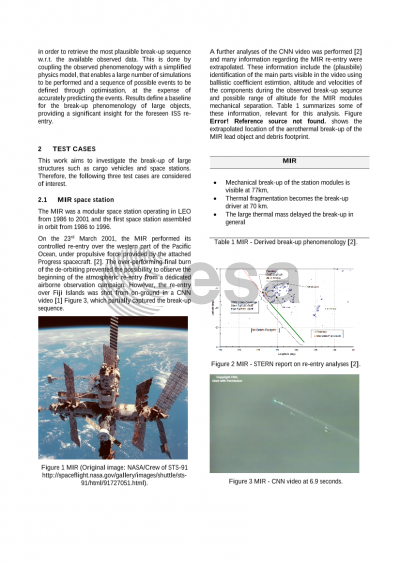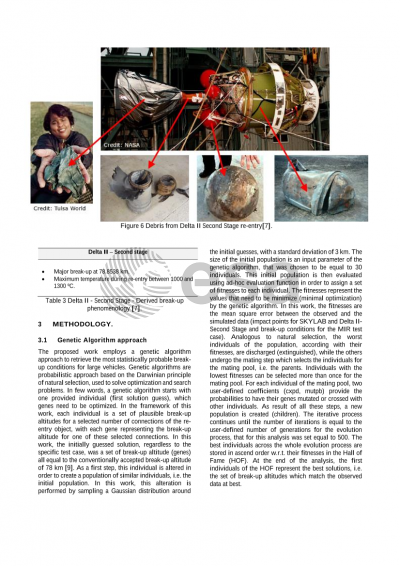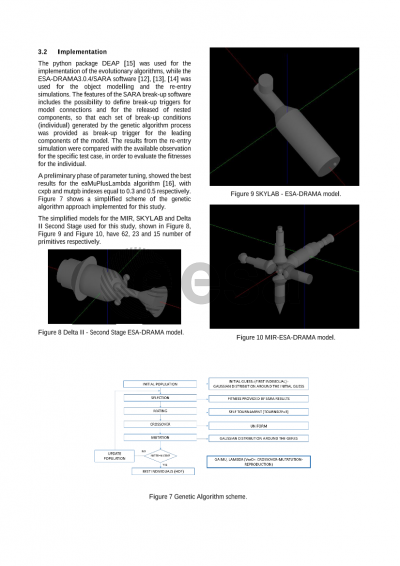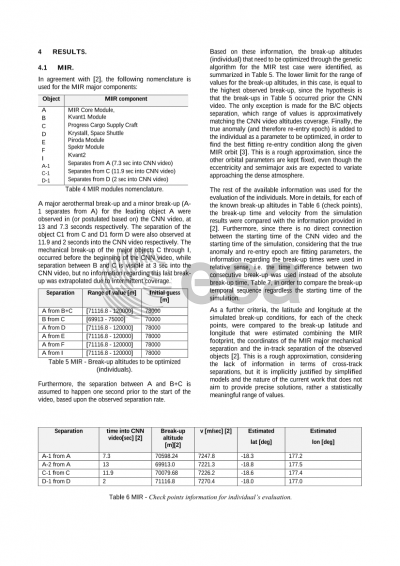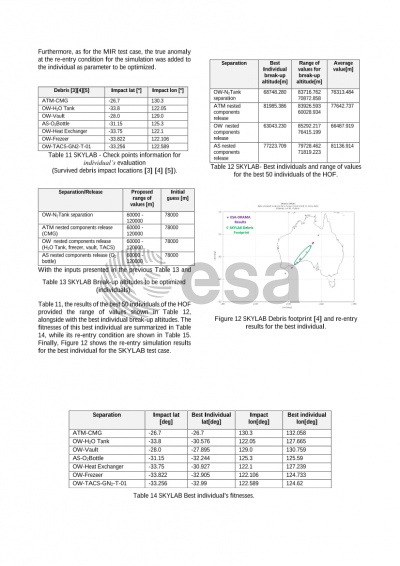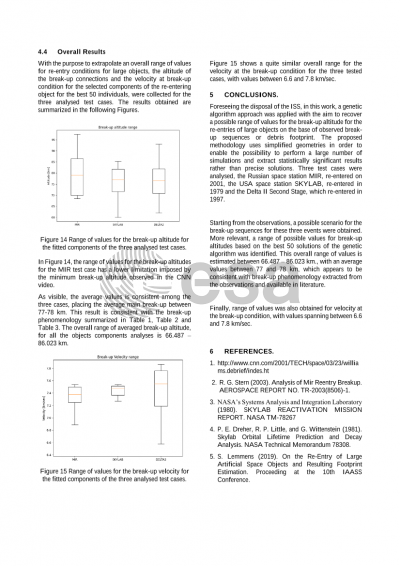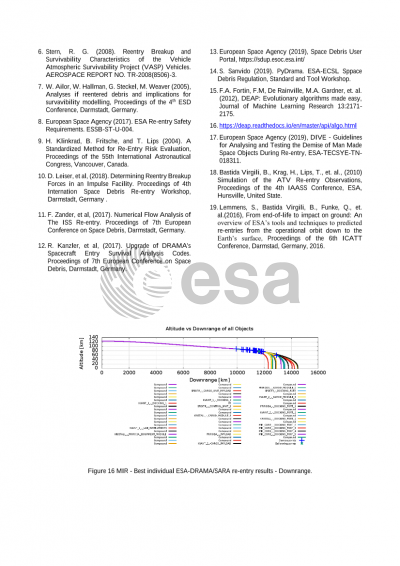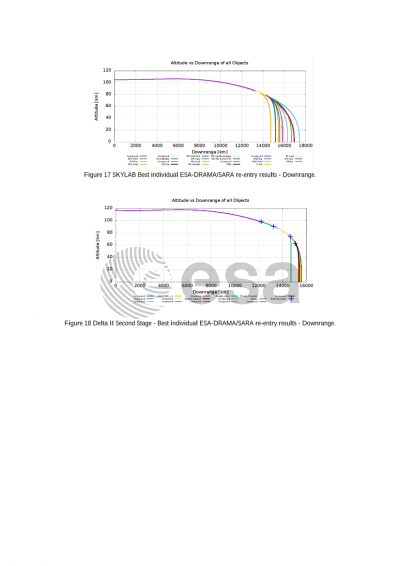Document details

Abstract
It was the 23rd March 2001 when Hugh Williams OF CNN, which for the occasion has travelled until the western shores of Viti Levu, Fiji Islands, pointed his camera on the sky waiting to capture the Russian Space Station MIR during its controlled re-entry. He succeed, shooting 29 seconds, showing some sequential break ups of the MIR [1]. A further analysis of the video was able to relate the objects visible in the images to the MIR modules and to extract partial information of the break-up sequence [2]. This happened more than 20 years after the re-entry of another Space Station, the United States’ SKYLAB [3], which in the 1979 underwent a partially controlled re-entry over the Indian Ocean and part of the South Western Australia. Some of the Skylab fragments were found in the south West Australia [4], and their on-ground distribution could be used to get insight on its break-up sequence [5].
Considering the foreseen nominal end of life of the International Space Station (ISS), it is natural to question if the collected information of the MIR and SKYLAB re-entry could be used to set a baseline to understand and predict the break-up sequence of the ISS or space stations in general. The proposed work aims to find a possible answer to this question by exploiting the heterogeneous information available from the aforementioned re-entries, such as altitude and velocity of MIR modules extracted by the CNN video and the footprint of SKYLAB surviving debris, and establishing a methodology based on genetic algorithm in order to retrieve the most plausible break-up sequence w.r.t. the available observed data. This is done by coupling the observed phenomenology with a simplified physics model that enables a large amount of simulations to be performed and a sequence of possible events to be defined through optimisation, at the expense of accurately predicting the events. Results define a baseline for the break-up phenomenology of large objects, providing a significant insight for the foreseen ISS re-entry.
References:
[1]http://www.cnn.com/2001/TECH/space/03/23/williams.debrief/indes.ht
[2] R. G. Stern (2003). Analysis of Mir Reentry Breakup. AEROSPACE REPORT NO. TR-2003(8506)-1
[3] NASA’s Systems Analysis and Integration Laboratory (1980). SKYLAB REACTIVATION MISSION REPORT. NASA TM-78267.
[4] P. E. Dreher, R. P. Little, and G. Wittenstein (1981). Skylab Orbital Lifetime Prediction and Decay Analysis. NASA Technical Memorandum 78308.
[5] S. Lemmens (2019). On the Re-Entry of Large Artificial Space Objects and Resulting Footprint Estimation. Proceeding at the 10th IAASS Conference.
Preview

